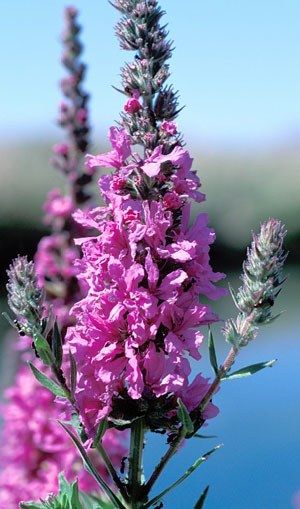 The term “invasive species” is a new one in my life. I was raised to love nature. The idea that something that is growing out of the ground on its own has no business doing so was never considered.
The term “invasive species” is a new one in my life. I was raised to love nature. The idea that something that is growing out of the ground on its own has no business doing so was never considered.
A case in point: The Purple Loosestrife Festival. This was something we looked forward to each year in rural Hillsdale County, in southern Michigan along the Ohio border. The gorgeous purple spiky flowers brightened the roadsides throughout our county in late July and cars often pulled into the ditch to harvest what we considered a “wildflower.”
Beginning in 1982, thousands of wildflower enthusiasts would travel to Hillsdale to take guided tours of gardens and parks featuring the flower, which was deliberately planted in several of the public parks. The festival included historic “re-enactments” and lots of art shows and bake sales.
I distinctly remember one summer when I would miss the festival to go away to camp. My family went without me and brought back a pair of beautiful barrettes decorated with bright purple ribbons curled to resemble the loosestrife. I loved those barrettes!
You can imagine my dismay upon learning that a plant I loved, picked, smelled and actually celebrated was a dreaded “invasive species!” Of course, I was embarrassed that our little backward hamlet was naïve enough to celebrate what others were cursing. Personally, my family never cultivated the plant but I’m sure there were others who happily transplanted the invader, nurtured it and considered it part of “nature.” In fact, a 1983 newspaper article mentions that the state highway department actually took seeds from Hillsdale to plant elsewhere around the state.
Now I know that the purple loosestrife (Lythrum salicaria) is a European wetland plant introduced in the New York canals 1830s. Today it is in every contiguous state except Florida and in all Canadian provinces. The problem with loosestrife is that one plant produces more than 2 million seeds yearly and can take over an entire wetland ecosystem. It is hardy and can survive merely being cut back. It has to be uprooted by hand or killed by herbicide.
So when I see it — which is not as common a sight as I remember — I remove it but not without a little twinge for its beauty and for the celebrations of my childhood.
